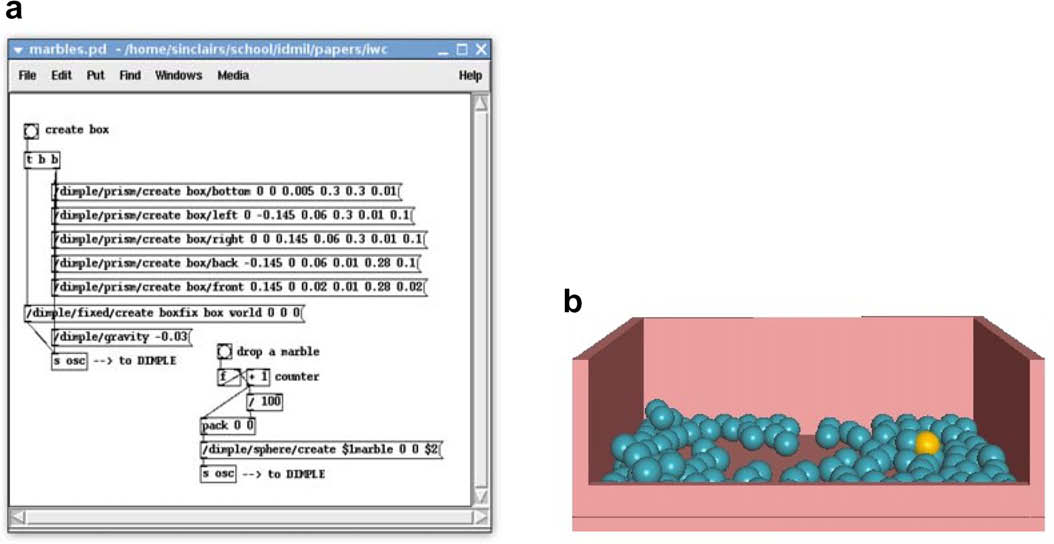DIMPLE

Tool Summary
| Metadata | |
|---|---|
| Release Yearⓘ The year a tool was first publicly released or discussed in an academic paper. | 2007 |
| Platformⓘ The OS or software framework needed to run the tool. | Windows, macOS, Linux |
| Availabilityⓘ If the tool can be obtained by the public. | Available |
| Licenseⓘ Tye type of license applied to the tool. | Open Source (GPL 2) |
| Venueⓘ The venue(s) for publications. | NIMEInteracting with Computers |
| Intended Use Caseⓘ The primary purposes for which the tool was developed. | Simulation, Music |
| Hardware Information | |
|---|---|
| Categoryⓘ The general types of haptic output devices controlled by the tool. | Force Feedback |
| Abstractionⓘ How broad the type of hardware support is for a tool.
| Consumer |
| Device Namesⓘ The hardware supported by the tool. This may be incomplete. | omega.x, delta.x, sigma.x, Phantom, Novint Falcon, Razer Hydra |
| Device Templateⓘ Whether support can be easily extended to new types of devices. | No |
| Body Positionⓘ Parts of the body where stimuli are felt, if the tool explicitly shows this. | N/A |
| Interaction Information | |
|---|---|
| Driving Featureⓘ If haptic content is controlled over time, by other actions, or both. | Action |
| Effect Localizationⓘ How the desired location of stimuli is mapped to the device.
| Location-aware |
| Non-Haptic Mediaⓘ Support for non-haptic media in the workspace, even if just to aid in manual synchronization. | Visual, Audio |
| Iterative Playbackⓘ If haptic effects can be played back from the tool to aid in the design process. | N/A |
| Design Approachesⓘ Broadly, the methods available to create a desired effect.
| Direct, Procedural |
| UI Metaphorsⓘ Common UI metaphors that define how a user interacts with a tool.
| N/A |
| Storageⓘ How data is stored for import/export or internally to the software. | None |
| Connectivityⓘ How the tool can be extended to support new data, devices, and software. | Open Sound Control |
Additional Information
DIMPLE is a framework to connect visual, audio, and haptic simulations of a scene using OSC. Haptics support is provided via CHAI3D. DIMPLE allows for scenes to be constructed by a client, such as Pure Data, over OSC, and creates corresponding graphical and haptic representations of it using CHAI3D, ODE, and GLUT. The user can then connect data from events in these scenes (e.g., an object’s motion) to the audio synthesis environment of their choice.
For more information on DIMPLE, please consult the NIME’07 paper, the 2009 Interacting with Computers article, and the GitHub repository.